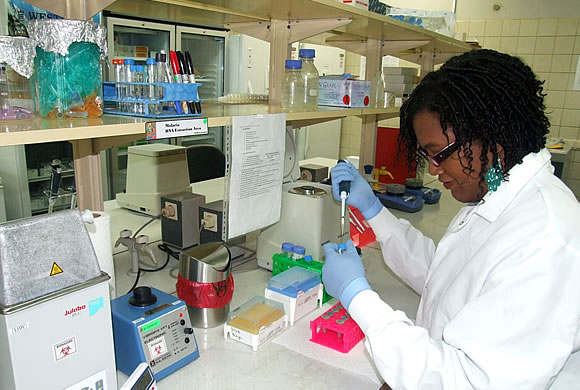The aim of this study is to determine the HPV prevalence and genotype distribution in cervical cancer in Suriname. Cervical cancer is the predominant malignancy and the second leading cause of cancer‐related deaths in women in Suriname.
Human papillomaviruses (HPVs) are small DNA viruses that infect mucosal and skin epithelial cells. There are more than 150 HPV types identified of which more than 10 are classified as high-risk and 7 as probable high-risk HPV types. The high risk HPV types have been established as the main etiological agent for the development of cervical cancer, while low risk HPV types can cause benign lesions as genital warts. High‐risk HPV is present in more than 99.7% of cervical carcinomas worldwide with HPV types 16 and 18 as the two most common types in invasive cancer.
In this prevalence study, we will investigate all biopsies from patients diagnosed in Suriname in 2010 and 2011 with cervical cancer. Patient characteristics and test results will be reviewed and DNA will be extracted from the archival formalin-fixed paraffin-embedded tissue.
The quality of the extracted DNA will be monitored and HPV infection will be detected with a master-nested PCR combination utilizing consensus primers. Individual HPV typing will be performed for 12 high-risk types and the two most common low-risk HPV types.
This prevalence study will not only provide Suriname with national epidemiological HPV data, but also with scientific data to provide indications for the expected efficacy of current and future HPV vaccination and for the impact of future HPV screening.

